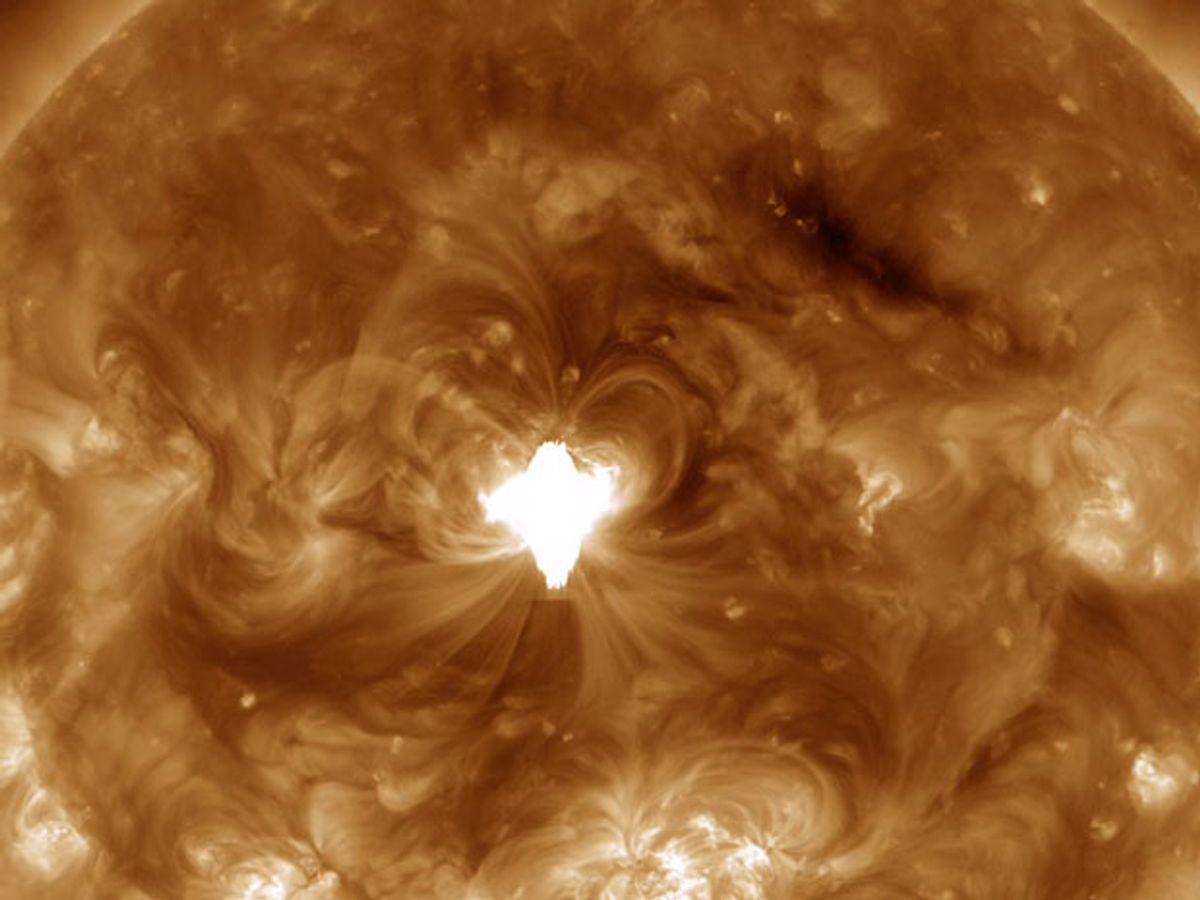Two recent solar eruptions hurled writhing ribbons of magnetic field and plasma at the Earth. Luckily, the planet's own magnetic field helped to deflect most of the energy and limit the damage. But scientists say that the arrival of these solar storm events could have played some mild havoc with GPS satellites and terrestrial communications systems this past weekend.
Most people likely failed to notice the arrival of the solar storms unless they live where they could observe the spectacular aurora displays in the northern latitudes, says SPACE.com. In addition to the disruption of GPS, the storms may have affected radio signals and caused some minor voltage irregularities in the northern U.S. power grids. Still, such events serve as a reminder of the destructive power of solar storms that have wreaked havoc on Earth in the past, but could cause even greater disruption in the future because of humanity's increased dependence on electrical infrastructure.
The latest space weather forecasts by NOAA's Space Weather Prediction Center on Friday suggested that the arrival of the first coronal mass ejection (CME) on Thursday triggered a moderate G2 geomagnetic storm event. (Geomagnetic storms are ranked on a scale of 1 to 5 with 5 being the most severe.) A second CME, which arrived on Friday, combined forces with the first CME to create a stronger, G3 event on Saturday, before tapering off to basically nothing by today.
Such events remain a far cry from the Carrington Event of 1859 that caused electric current surges in telegraph lines, blew out batteries, and shocked some unfortunate telegraph operators. The huge solar flare event also triggered red aurora displays across the planet. Fortunately for human civilization, the world had not yet become as dependent upon vulnerable electrical systems that enable practically every facet of modern-day life.
Similarly, the last major solar storm event, in 1921, did not have a significant impact on our day-to-day activities. But if such planet-wide solar storms struck today, they could potentially inflict catastrophic damage to power grids, oil and gas pipelines, cellular networks, undersea communication cables for the Internet, and railways. (See the IEEE Spectrum analysis "A Perfect Storm of Planetary Proportions".)
The increased vulnerability of modern human civilization was illustrated by a much smaller solar storm in 1989. That storm left 6 million customers of Quebec's power grid in the dark for about nine hours and almost took down a few U.S. power grids as well.
This past weekend's twin solar storm event also echoes a much bigger set of solar eruptions in 2012. The almost simultaneous coronal mass ejections in July 2012 created a huge magnetic storm that missed striking the Earth by just nine days. If they had hit, researchers estimate the economic impact from damage to satellites, power grids, and other critical infrastructure could have totaled trillions of U.S. dollars.
Jeremy Hsu has been working as a science and technology journalist in New York City since 2008. He has written on subjects as diverse as supercomputing and wearable electronics for IEEE Spectrum. When he’s not trying to wrap his head around the latest quantum computing news for Spectrum, he also contributes to a variety of publications such as Scientific American, Discover, Popular Science, and others. He is a graduate of New York University’s Science, Health & Environmental Reporting Program.



